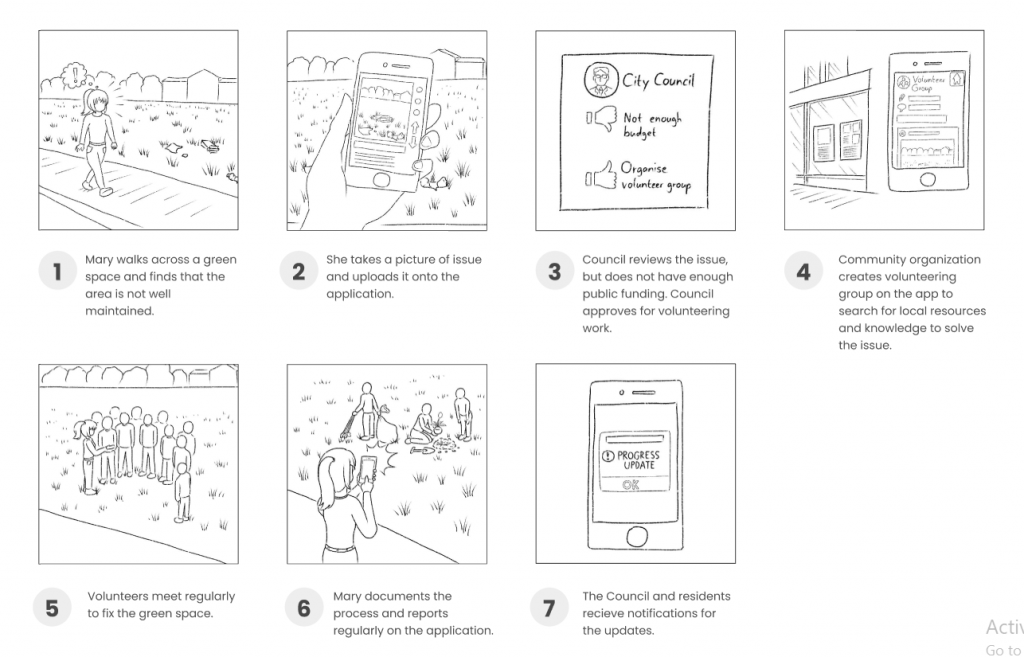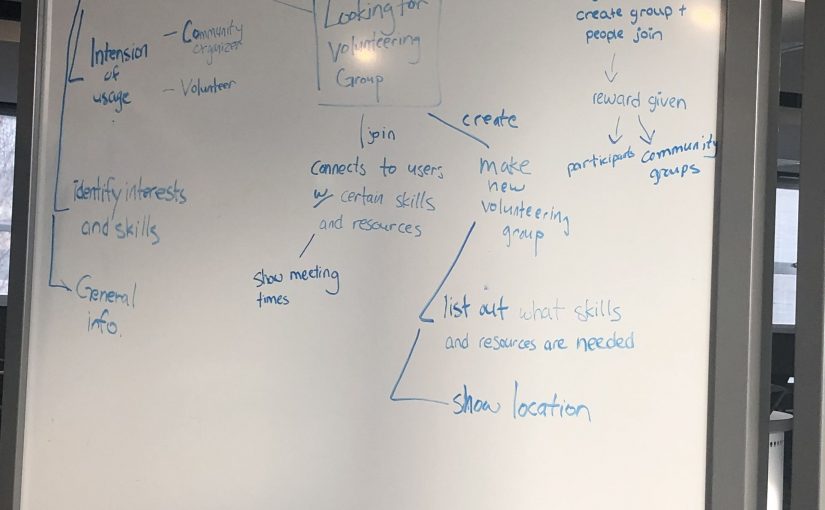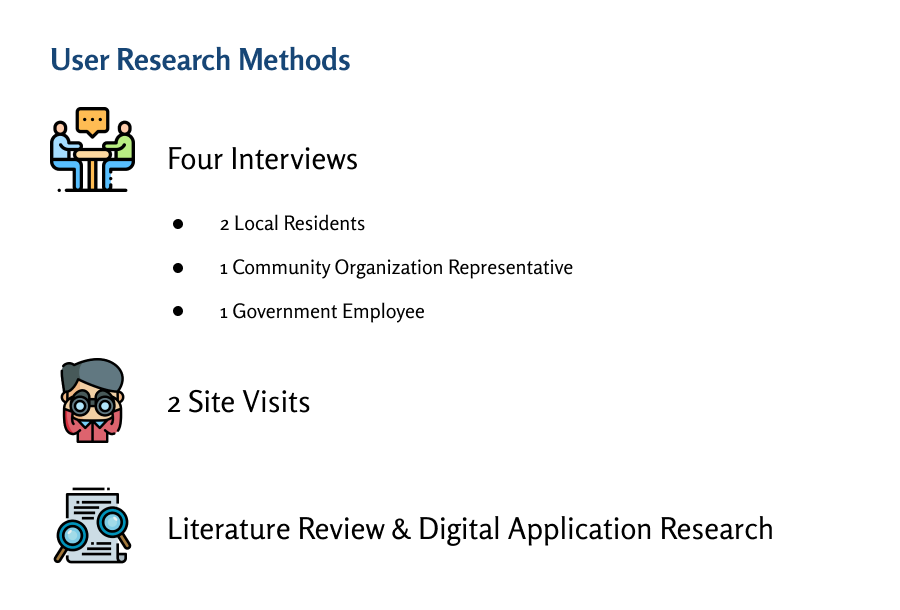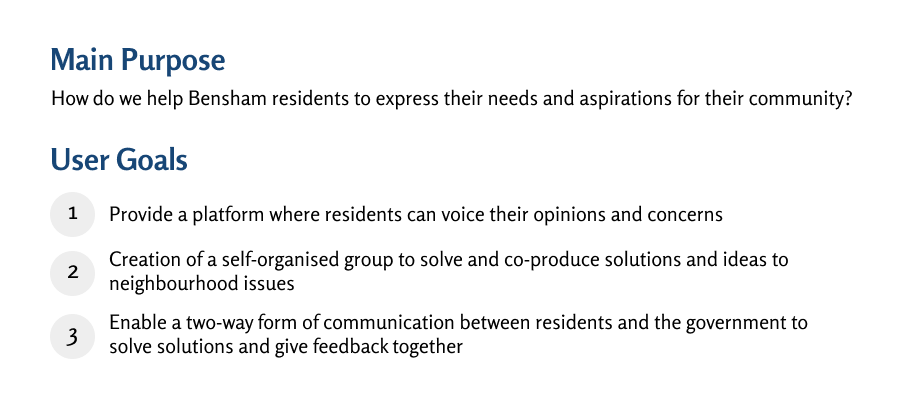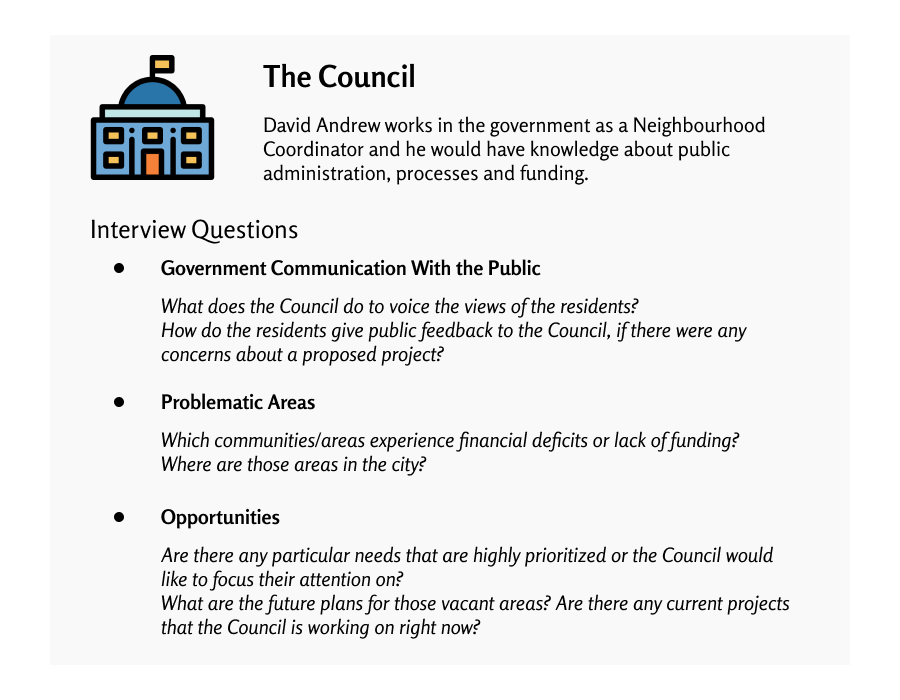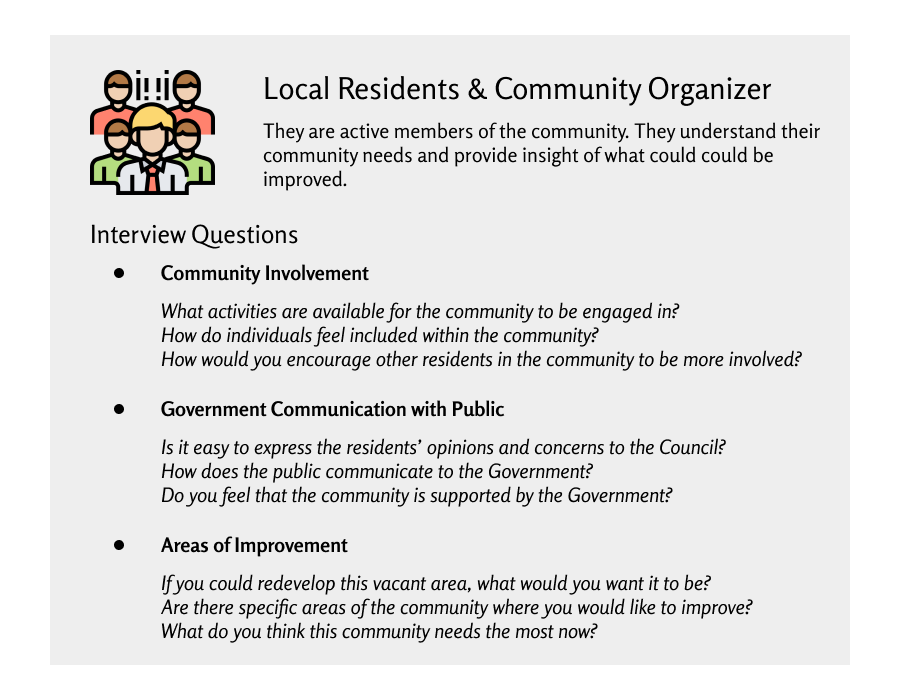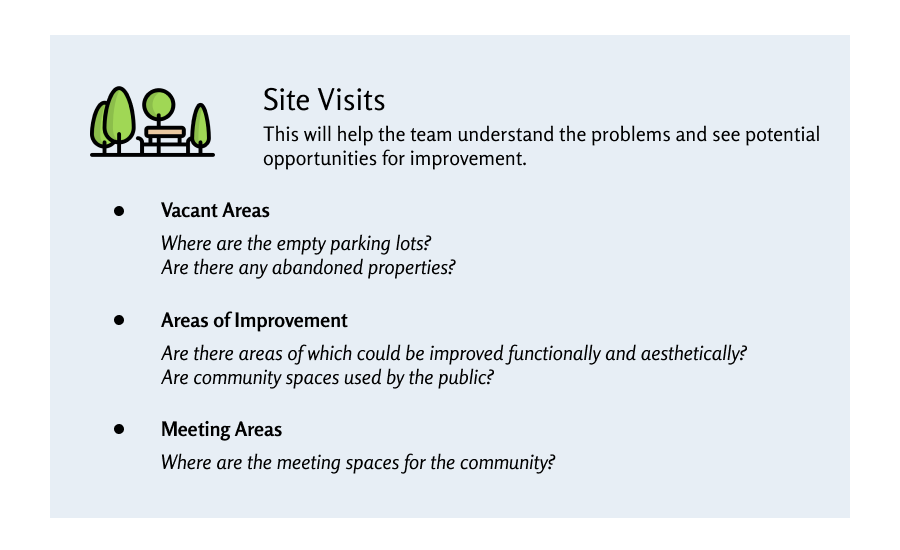This week we focused on putting a plan together for our prototype demos. The plan involved our actions before, during and after a potential prototype user test we are aiming to carry out in the future. The purpose of our prototype test is to “gauge users’ experience with [the] system” (Hertzum, 2016) and identify the positives and negatives of our app at its current stage, whilst receive feedback on its usability and design from a fresh perspective.
Before carrying out our prototype demonstration, we had to establish a set of parameters for our test, including our target participant, our aims from the test itself, how we intend to carry out the user test and the different roles we can each take.
Firstly, we defined our ideal participants as being residents of Bensham who perhaps had an interest in volunteering or being involved in local issues, as these will be the most likely users of our application.
Also, during these tests, we are aiming to identify the ease of use for participants trying to navigate our application and their ability to use its functions effectively.
Furthermore, for deciding how we will carry out the user prototype test, due to the current global situation regarding COVID-19, we considered the most efficient method of contacting with potential participants would be through a video conference call/ meeting whereby users can also have access to our prototype through the ‘figma’ application and share their screens while testing the app.
Finally, we considered some important roles for us to cover during this user testing phase, which would be:
- A Facilitator – Leads conversation within the session and encourages user testing through hints etc.
- Observer/ Note taker- to keep a script of all the important events during user testing (e.g. User confusion/ stalling at certain points using the app? / Opinions of the user)
During our user testing phase, we considered the actions we need to complete in order to ensure our prototype test is successful. For this section we took inspiration from the ‘Five-Act Interview’ from ‘Sprint’ on YouTube [https://www.youtube.com/watch?v=U9ZG19XTbd4]. Referenced in this video were five key aspects needed to be involved in your user interview.
The introduction is the first stage of the interview, whereby we will begin with a friendly introduction in order to make the user feel as comfortable as possible and explain what it is they can expect from the session. It is important to make sure the participant is at ease with the situation so that they can give a critically honest review of the product. Following the introduction, it is useful to ask a series of contextual questions to discover the background of the participant, which will offer a more insightful meaning to their responses and reasoning for being a potential user of the application.
We then had to consider introducing the application and decided the best action is to describe the aim of our application and a potential situation where it may be used. After this, we considered the tasks we would ask participants to complete during the testing phase and the questions we may ask during this section, as these are vital to the results we get from the test.
Basic tasks that would be useful for us to explore through user testing would include:
- The ability to post and report an issue.
- The ability to set up a volunteering group/ interact with other users on the application.
- The up-voting and down-voting function of the application.
Through exploring such tasks as these we can gain an understanding of how easy it is to navigate our product in the way which we aim for it to be used. During these tests it is important we remind our users to speak aloud about what their thoughts are whilst using the app, such as where they may be confused, or whether they like/ dislike certain aspects. We also considered the importance of not guiding them through the app step-by-step and instead allowing them to figure it out (with occasional hints from the facilitator) as this would produce the most authentic experience for a new user and allow us to “find any problems that prevent users from completing their tasks, slow them down, or otherwise degrade their user experience” (Hertzum, 2016).
Once the user has prototyped our app, we will then ask several questions to try and gain an overall review of the product from an outsider perspective, these questions would include:
- What did you like/ dislike about the concept?
- Are there any things about it you would suggest changing?
- How was your experience using the app and would you choose to use it again?
Are there any applications like this one that you know of?
In conclusion, once we have completed our user prototype testing we will evaluate the success of our product and review the results we received from our users. The ways in which we will test our success will include comparing our user tests to our designated tasks to see how many times user was able to complete the tasks with ease or where they needed assistance. Finally, we will document our insights from our demos by comparing each user test and identifying commonalities This will allow us to further design out potential flaws with our app and improve its functionality.
References:
Hertzum, M. (2016) ‘A usability test is not an interview’, Interactions, 23(2), 82–84, Available at: http://doi.org/10.1145/2875462 [Accessed 27/03/2020]
Sprint. (2016) ‘From Sprint: The Five-Act Interview’, available at: https://www.youtube.com/watch?v=U9ZG19XTbd4 [Accessed 25/03/2020]
Patrick
